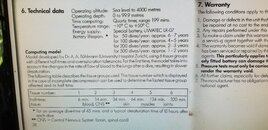I see what you mean about the strong opinions. I did not know it was the case for deco models and computer as well.
I will add a graph or the option to display the ceilings for all tissues, this will make it easier to either debug or see what's happening.
I will add a graph or the option to display the ceilings for all tissues, this will make it easier to either debug or see what's happening.





